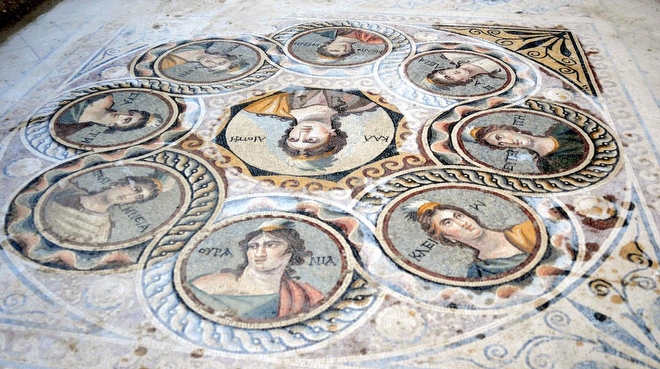The ancient city of Zeugma is an ancient city where excavation work is continuing today, located 10 km away from the Nizip district of Gaziantep. The distance to Gaziantep city center is approximately 50 km. If you come to Gaziantep just to see the ancient city of zeugma you will last 1 day. However, we advise you not to go to Antep before you see other historical places in Antep and Antep cuisine.
History of Zeugma Antique City
This ancient city, named Selevkos Nikator, one of the great generals of Alexander the Great, took the name Selevkos euphrates (Firat’s Silifkei) by combining the name of the general with the name of the Firath River passing through the area. The construction of important architectural works in the city, which has a military and commercial strategic position, progresses day by day.
Selevkos city m.ö. In the 64th year the Roman empire was included in the world. The name is changed to ‘zeugma’ meaning bridge. In this city where the most productive times were experienced in these years, the importance of the city increased because the ‘Silk Road’, from Antakya, one of the most important tiacetic roads of the period, passed through this city.
The most important factor that enables the ancient city of Zeugma to be found in front of other ancient cities in Anatolia is undoubtedly the sculptural school that developed in this region. Many works of art made during this period are presented to our country and to different places of the world. The city, which had reached 80 thousand in the time of the Romans, also continued to play an important role in trade by suppressing its own coins. On one side of these coins was a ‘tnyke temple’ and on the other side ‘mottled’ motif.
The city, which was founded in the shallowest region of the Euphrates River, received customs tax for passage from those who wanted to go to the city of apameia across the river. At the end of the excavations carried out today, 100.000 stamps called ‘bulla’ were obtained in the region. It is possible to visit these seals at the Gaziantep Archeology Museum.
Historical Contemporaries and Works of Zeugma
Ares (mars) sculpture: This sculpture is one of the most important historical monuments of the zeugma antique city, reaching to daylight. It is a bronze statue of 1.50 meters long from the time of the romans. It is said that ARES, one of the most important gods for the Romans, symbolizes fertility and power. The sculpture, which has been brought to the surface since about 1,800 years under the soil, has been cleaned with extreme care and great care. After the cleaning work, they found a burn on the statue. This leave, m.s. It is expressed that the paths that took the zeugma city in 252 remained from the periods when they attacked the city.
Mosaics: Gaziantep Museum zeugma section is waiting for many mosaic works. We want to talk briefly about the major ones of these works.
Triton: The triton, one of the mosaics that managed to reach as far as the day-to-day, was amphitrite posseidon’s baby on this mosaic. (Amphytrite is known as the queen of the seas.)
Poseidon, oceanos and tethys mosaics: In this mosaic, estimated as a pool or dining room floor, the gods of the seas are located. At the top is a posseidon on the creature called hippocampus, with the front side being attenuated and the back side being fish. Posseidon has a circlet with 3 teeth in his hand. In the lower part of the mosaic there is again a sea god, oceanos, and tethys, which symbolizes the feminine in the seas.
Gypsy mosaic: you are sure that you have already seen this mosaic before. This mosaic, which became the symbol of the ancient city of Zeugma, could not be identified with its identity when it was first unearthed and was later called ‘gypsy mosaic’ because it reminded the gypsy girls. According to the information contained in other sources, it is claimed that this is the god of the place.


















